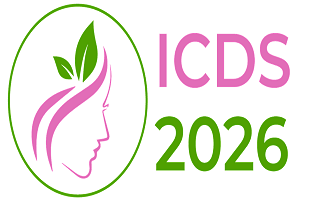3rd International Conference on
Dermatology & Skincare
April 16-17, 2026 | Chicago, USA

Address: 9300 Bryn Mawr Avenue, Rosemont, IL 60018, United States
ICDS 2026

Hualien Tzu Chi Hospital, Taiwan
Abstract:
This systematic review evaluated systemic treatment modalities for pediatric Stevens–Johnson syndrome (SJS) and toxic epidermal necrolysis (TEN), focusing on the relative effectiveness of monotherapy versus combination therapy. A comprehensive search of PubMed, Embase, and Cochrane Library through April 26, 2025, identified 36 studies—9 retrospective observational studies and 27 case series or reports—comprising 1,148 pediatric patients. The primary outcomes analyzed were mortality and complete remission (CR) rates. Mortality varied from 0% to 33.3% in observational studies depending on treatment approach, while case reports/series collectively reported only two deaths. Among the treatment options, steroid monotherapy (84.6%) and supportive care alone (83.3%) showed the highest CR rates, outperforming intravenous immunoglobulin (IVIG) monotherapy (64.7%) and combined steroid with IVIG therapy (50.0%). Tumor necrosis factor-alpha (TNF-α) inhibitors, especially etanercept, showed promise as potential alternatives but require further evaluation. Regardless of treatment type, long-term sequelae—including dyspigmentation, corneal damage, dry eye, and transaminitis—were observed. The risk of bias in the included studies was assessed using appropriate tools (ROBINS-I and JBI checklists), and data synthesis adhered to PRISMA guidelines. Overall, the findings suggest that steroid monotherapy and supportive care alone are potentially effective first-line treatments for pediatric SJS/TEN. Given the limited high-quality comparative data, cautious interpretation is warranted. This review contributes to the evidence base supporting clinical decision-making in managing these rare but severe dermatologic conditions in children and underscores the need for prospective studies to clarify optimal treatment strategies.
Biography:
Dr. Yu-Chieh Chiu is a PGY1 at Hualien Tzu Chi Hospital. She holds an MD from Tzu Chi University and has authored several publications with two Q1 first author articles.
